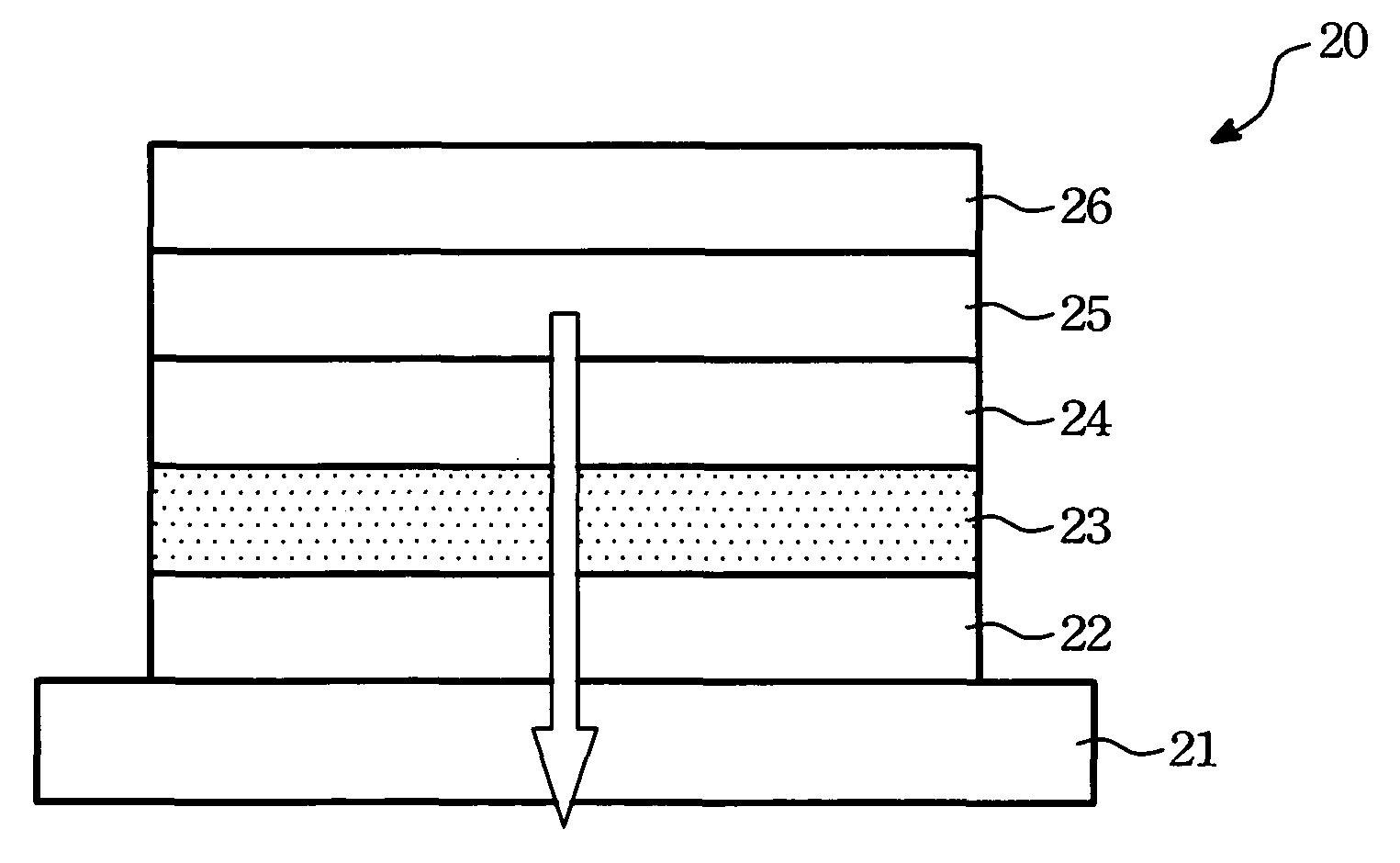Organic electroluminescent device
a technology of electroluminescent devices and organic materials, which is applied in the direction of discharge tube luminescnet screens, natural mineral layered products, other domestic articles, etc., can solve the problems of reducing process yield, color shift due to life difference, and hard mask-making, and achieves high quantum efficiency, superior carrier transport ability, and the effect of improving the yield
- Summary
- Abstract
- Description
- Claims
- Application Information
AI Technical Summary
Benefits of technology
Problems solved by technology
Method used
Image
Examples
Embodiment Construction
[0030]Referring to FIG. 4, an organic electroluminescent device (OELD) 20, at least comprises a first electrode 22, an organic color conversion layer 23, a carrier transporting layer 24, an emissive layer 25, and a second electrode 26. The organic color conversion layer 23 is disposed on the first electrode 22. The carrier transporting layer 24 is disposed on the organic color conversion layer 23. The emissive layer 25 is disposed on the carrier transporting layer 24. The second electrode 26 is disposed on the emissive layer 25. The organic color conversion layer 23 has the superior carrier transporting ability and high quantum efficiency. Besides the function of color conversion, the organic color conversion layer 23 also serves as a carrier injection layer. The organic color conversion layer 23 allows only one kind of carrier, the electrons or the holes, to pass through itself for emitting light. Therefore, the carrier transporting layer 24 is interposed between the organic color ...
PUM
| Property | Measurement | Unit |
|---|---|---|
| thickness | aaaaa | aaaaa |
| wavelength | aaaaa | aaaaa |
| HOMO | aaaaa | aaaaa |
Abstract
Description
Claims
Application Information
 Login to View More
Login to View More - R&D
- Intellectual Property
- Life Sciences
- Materials
- Tech Scout
- Unparalleled Data Quality
- Higher Quality Content
- 60% Fewer Hallucinations
Browse by: Latest US Patents, China's latest patents, Technical Efficacy Thesaurus, Application Domain, Technology Topic, Popular Technical Reports.
© 2025 PatSnap. All rights reserved.Legal|Privacy policy|Modern Slavery Act Transparency Statement|Sitemap|About US| Contact US: help@patsnap.com



